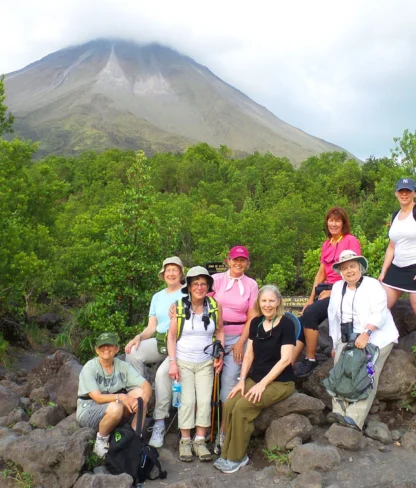Minimize Your Risk of Breast Cancer: Get the Facts

Although there are no sure-fire ways women can fully protect themselves from a diagnosis of breast cancer, there are measures we can take that can help to mitigate the risk.
Breast cancer research and treatment have one of the highest rates of funding among diseases overall in the United States. Thanks to strong levels of breast cancer funding ($2,596 per newly-diagnosed case of breast cancer / $13,452 relative to each cancer death), we know much more about how to minimize the risks and myths about this illness, and maximize resources available for those directly or indirectly affected by this disease.

HOW TO MINIMIZE THE RISK OF BREAST CANCER
As scary as this disease is, there are steps you can take to reduce your risk of developing breast cancer.
Below, we sum up some things you can do in your daily life to minimize your risk of being diagnosed. To be clear, there are genetic, hereditary, and other factors (i.e., older age, early menstruation, late menopause, no children, tall height, dense breasts, and history of benign breast disease, among others) that our outside of our control, but for many women, the steps listed below represent a first line of defense against breast cancer.
Tip #1| Practice Positive Self-Care – Consistently
Doing what we can to be the healthiest version of ourselves is a strong deterrent to cancer in general and it’s why practicing self-care is so important.
- Maintain a healthy weight. Being overweight increases breast cancer risk, especially for women who gain weight as adults and/or after menopause, when most estrogen comes from fat tissue. More fat tissue means higher estrogen levels, which can increase the chance of getting breast cancer. Losing even a small amount (half pound a week) is a great place to start. Following a healthy diet (e.g., Mediterranean, or any rich in vegetables, whole grains, legume, nuts, and fruit) can also help in losing weight.
- Exercise regularly. Exercise is also key to maintaining a healthy weight! Moderate-intensity level is most effective – anything that raises your heart rate. The American Cancer Society suggests at least 150 minutes of moderate activity or 75 minutes of vigorous activity per week. Or a combination of both – spread out over the week.
- Limit alcohol consumption. Regularly consuming 2 to 3 drinks per day can lead to a 20 percent higher risk of developing cancer than abstaining from alcohol. Limiting consumption to just 1 drink per day, however, has only a small, insignificant increase in risk. The American Cancer Society defines 1 drink as 12 ounces of beer, 5 ounces of wine, or 1.5 ounces of liquor. As with so many things, moderation is key.
- Don’t smoke tobacco. The research is also clear that smoking increases the risk of heart disease, stroke and at least 15 cancers, including breast cancer.
- Avoid hormone replacement therapy when going through menopause – or use the lowest dose possible for as short a time as possible. Research now shows that postmenopausal women who take a combination of estrogen and progestin have a higher risk of developing breast cancer.

Tip #2| Know Your Genetic and Family History around Breast (and Ovarian and Prostate) Cancer
The good news for women with a family history of cancer is that there are special steps they can take to take protect themselves. This is why it is so important for women to research and get the facts about their family history with breast cancer. The risk of developing breast cancer is twice as high for women with a first-degree relative (mother, sister, daughter) who has or had breast cancer at an early age or tested positive for the BRCA1 or BRCA2 genetic mutation. Women related to any family member with ovarian cancer at any age or multiple extended family members (including males) with breast, ovarian, or prostate cancer are considered to be at a higher risk. Consult with your doctor to help interpret your family history with these risk factors.
Furthermore, some breast cancers can be prevented using proactive steps such as surgery, for example those caused by the BRCA gene. Women with the BRCA gene mutation have a 45 to 65 percent chance of developing breast cancer by age 70. Due to their relatively higher risk of developing breast cancer, these women may choose to have preventive mastectomies.

Tip #3| Get Regular Breast Cancer Screening
Breast cancer screening (e.g., getting a mammogram) can help find cancer early, when it’s most treatable. For most women at low-to-standard risk of breast cancer, regular mammograms can begin at age 40, but specific recommendations from the American Cancer Society vary by age and risk. Please note that recommendations for breast cancer screening differ for those at high risk of developing breast cancer.
- Age 40–44: optional yearly mammograms begin, but it is important to talk to a doctor about the risk and benefits in this age bracket.
- Age 45–54: annual mammograms are recommended.
- Age 55+: biennial mammograms are recommended, but some women choose to continue annual mammograms.
Lastly, the American Cancer Society reports that research doesn’t show a clear benefit to either clinical or self-examinations, especially when done in conjunction with mammograms, but it’s critical that women know their bodies well enough to detect any changes in how their breasts or nipples look and/or feel.
DEBUNKING COMMON MYTHS ABOUT BREAST CANCER TREATMENTS
Analyzing the various treatment options available for breast cancer patients is beyond the scope of this blog, but we want to address briefly some pervasive myths and misconceptions surrounding breast cancer treatment prevention options.
Here are the facts about breast cancer treatment options:
- Breast cancer surgeries and biopsies are unlikely to cause cancer to spread.
- Only certain patients at high risk of developing breast cancer (e.g., those who test positive for the BRCA-1 and BRCA-2 genetic mutations) may benefit from risk-reducing surgery (mastectomy).
- For many women, lumpectomies can be as effective as a mastectomy in terms of how well patients do in the long run. However, this doesn’t apply if the cancer has spread or tumors are large.
- After a mastectomy, the chance of recurrence is smaller than after a lumpectomy, but it’s not nil – cancer can occur or recur if even one microscopic cell is left behind after a lumpectomy, mastectomy, or double mastectomy. This is true whether you’ve been diagnosed, or whether you choose to have a preventative single or double mastectomy.
For more on current treatments available, consider this new study in the New England Journal of Medicine, which finds evidence in support of using a combination of immunotherapy and chemotherapy in treating particularly aggressive, triple-negative breast cancer.

RESOURCES FOR WOMEN ABOUT BREAST CANCER DIAGNOSIS AND TREATMENT
The Susan G. Komen Foundation has a comprehensive list of resources for patients and caregivers alike.
Taken together, all of these tips for proactively managing your health can have a big impact on reducing your risk of being diagnosed with breast cancer. Be well, Adventure Women!


